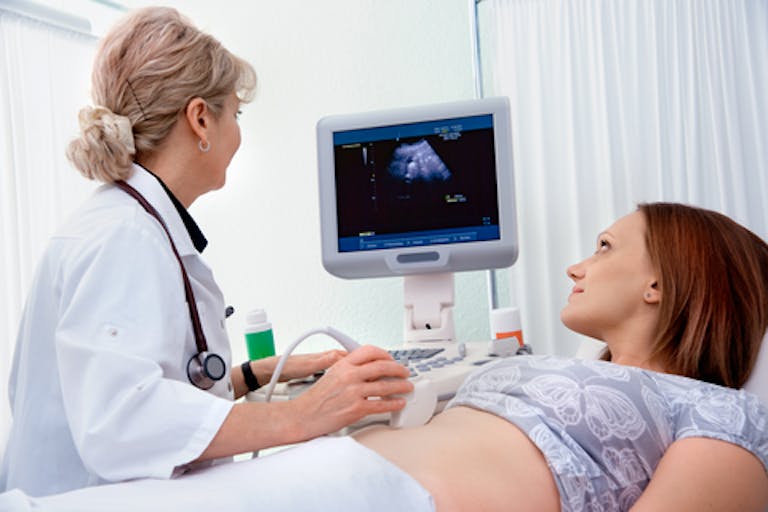
Judge overturns state’s mandate to check for dangerous ectopic pregnancy before giving abortion pill
Bridget Sielicki
·
Abortion Pill·By Michael J. New
‘Teleheath’ abortions come with significant health risks
(National Review) Earlier this month, more than 70 Democrats in the House introduced a resolution asking the Food and Drug Administration (FDA) to permanently lift in-person requirements for chemical-abortion drugs.
Over the past year and a half, supporters of legal abortion have used the COVID-19 pandemic to expand access to chemical abortion. In 2020, pro-abortion groups litigated against existing FDA rules, which had required that chemical abortions take place under medical supervision. While those abortion proponents received a favorable ruling from a U.S. district court judge in July of last year, the Supreme Court ruled this past January that the FDA’s protective rules could remain in place.
But in April, under the direction of the Biden administration, the FDA lifted existing restrictions on telemedicine abortions for the duration of the COVID-19 pandemic.
In their reporting on this resolution, legacy media outlets such as The Hill and and NBC News promoted the pro-abortion spin that chemical abortions are safe. A number of outlets and pundits cited studies claiming that telehealth abortions do not pose health risks to women. Gizmodo and Ms. Magazine, for instance, covered a new study from JAMA Network Open, which purports to show that a small percentage of women who obtained a telehealth abortions from a virtual clinic in California required additional medical care. Writing for the New York Times, Emily Bazelon highlighted a February study in the International Journal of Obstetrics and Gynaecology that analyzed data from British women and found that telehealth abortions had low complication rates.
However, both of these studies have methodological shortcomings. The JAMA Network Open study analyzed only 141 women who obtained telehealth abortions, a smaller sample size than is typical for this type of study. Furthermore, of the 141 patients who obtained telehealth abortions, 13 patients did not respond to a follow-up survey, and the researchers were unable to obtain information about outcomes from another 18 patients. As a result, the researchers have no information about outcomes from more than 20 percent of the women who obtained chemical abortions, raising concerns about the reliability of the study’s findings.

The February International Journal of Obstetrics and Gynaecology study, meanwhile, compares outcomes from two groups of women in Great Britain who obtained chemical abortions. The first group obtained chemical abortions under medical supervision, while in the second group, some women obtained telehealth abortions and others obtained chemical abortions under medical supervision. As a result, the outcomes of women who obtained telehealth abortions were not considered separately from women who obtained abortions under medical supervision, so the study provides little insight into the safety of telehealth abortions.
READ: Study author touting mail-order abortion pill safety was paid by the pill’s manufacturer
A closer look at the United Kingdom raises some very serious concerns about the safety of telehealth abortions. In early 2020, the U.K. began allowing women to obtain chemical abortions via telemedicine. In the first six months of 2020, the overall number of abortions in the U.K. increased by about 4 percent.
Researcher Kevin Duffy found that between 2019 and 2020, emergency calls for follow-up care after a chemical abortion increased by 54 percent when extrapolated across England and Wales, and ambulance responses rose by 19 percent. Furthermore, Britain’s Care Quality Commission identified eleven cases in which women went the hospital after taking chemical-abortion pills via telemedicine beyond the gestational-age limit.
A significant body of research suggests that chemical abortions pose health risks. For instance, two studies have found that chemical abortions have approximately four times the complication rate of surgical abortions; one analyzed a dataset of California Medicaid patients from 2009 to 2010, and the other studied more than 42,000 Finnish women who obtained abortions between 2000 and 2006. Obtaining a chemical abortion in a case with an unknown ectopic pregnancy could be fatal for the pregnant woman, and chemical abortions after 10 weeks’ gestation pose additional health risks. If successful, this latest effort by congressional Democrats to allow chemical abortions without in-person medical supervision is likely to harm countless women, not to mention their unborn children.
Editor’s Note: This article was published at National Review and is reprinted here with permission.
“Like” Live Action News on Facebook for more pro-life news and commentary!
Live Action News is pro-life news and commentary from a pro-life perspective.
Contact editor@liveaction.org for questions, corrections, or if you are seeking permission to reprint any Live Action News content.
Guest Articles: To submit a guest article to Live Action News, email editor@liveaction.org with an attached Word document of 800-1000 words. Please also attach any photos relevant to your submission if applicable. If your submission is accepted for publication, you will be notified within three weeks. Guest articles are not compensated (see our Open License Agreement). Thank you for your interest in Live Action News!

Bridget Sielicki
·
Abortion Pill
Bridget Sielicki
·
Abortion Pill
Nancy Flanders
·
Abortion Pill
Carole Novielli
·
Abortion Pill
Carole Novielli
·
Abortion Pill
Nancy Flanders
·
Guest Column
Michael J. New
·
Guest Column
Michael J. New
·
Guest Column
Michael J. New
·
Guest Column
Michael J. New
·
Guest Column
Michael J. New
·